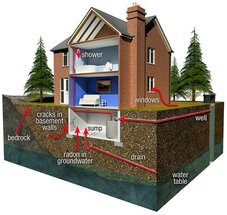Radon Gas
More than 21,000 people die each year from radon exposure all over the United States. According to the Ohio Association of Radon Professionals website in Ohio 1 in 2 households have enough Radon to pose a significant risk to the occupants. Only smoking causes more lung cancer deaths than radon gas. If you smoke and your home has high radon levels, your risk of lung cancer is especially high.
Visit our contact page today to get started!

